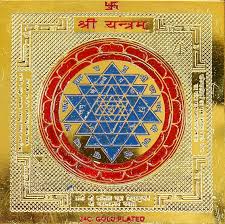Saraswati Symbolism : God Of Saraswati
Introduction
Hindu mythology regards the lotus blossom as a sign of purity, divinity, and spiritual enlightenment; it also represents Often recognized as the celestial throne or companion of the gods and goddesses, the lotus is a repeating element throughout the pantheon of Hindu deities. Among these, the goddess Saraswati—the personification of knowledge, wisdom, and the arts—is especially connected with the lotus flower, which has grown to be a fundamental component of her legendary depiction.
The Lotus: A Symbol of Saraswati’s Essence
The lotus flower is fundamentally connected to the goddess Saraswati in the complex tapestry of Hindu imagery. Saraswati’s link to the lotus is especially meaningful as the incarnation of knowledge, creativity, and the search of wisdom. The lotus reflects Saraswati’s own path of turning the human mind from the gloom of ignorance to the enlightenment of wisdom by rising from the muddy depths of the water to bloom.

The Lotus as Saraswati’s Seat
The lotus flower’s association with Saraswati is most notable in its function as her divine throne, or padmasana. Often shown sitting upon a fully blossoming lotus, Saraswati represents her control over the physical world and her capacity to transcend its restrictions. With its capacity to remain unspoiled by the filthy rivers from which it rises, the lotus stands for Saraswati’s own purity and distance from the worldly worries afflicting the human mind.
The Lotus in Saraswati’s Hands
Apart from being her throne, the lotus blossom is a typical item carried by the goddess Saraswati. Usually showing a single, fully bloom lotus in one of her hands, she emphasizes even more her link to this holy emblem. As the flower is said to be the manifestation of these heavenly qualities, the lotus in Saraswati’s hand marks her function as the bestower of knowledge, creativity, and the arts.
Iconography of The Lotus and Saraswati
Saraswati’s emblemography features the lotus flower, which transcends her seat and the object she is carrying. The lotus is also included into the goddess’s bodily form, therefore defining her visual character.

The Lotus and Saraswati’s Vahana
Hindu mythology holds that every deity is usually connected to a particular animal or chariot, sometimes referred to as a vahana, which symbolizes the qualities and might of the deity. Regarding Saraswati, her vahana is the swan, or hamsa, a bird intimately connected to the lotus bloom. Maintaining its purity, the swan’s elegant glide across the river reflects Saraswati’s own relationship to the lotus and its symbolic meaning.
The Lotus and Saraswati’s Complexion
Saraswati’s iconography also incorporates the lotus flower in part via the way her complexion is shown. Often described as the color of a freshly blossomed lotus flower, Saraswati is shown in many artistic depictions with a fair, brilliant complexion. Emphasizing her own divine and pure nature, this visual link helps the goddess to establish her connection to the holy blossom.
The Lotus and Saraswati’s Attributes
Apart from the visual depictions, the lotus blossom is also strongly related to the several qualities and symbolism connected with the goddess Saraswati.

The Lotus and Saraswati’s Vina
One of Saraswati’s most well-known characteristics is the vina, a stringed musical instrument she is usually shown with. Apart from representing the goddess’s artistic and musical skill, the vina is intimately associated with the lotus flower. Sometimes lotus patterns embellish the vina to highlight Saraswati’s close relationship with the holy blossom.
The Lotus and Saraswati’s Scriptures
Another quality strongly connected with Saraswati is the sacred scriptures, which the goddess is usually seen carrying in one of her hands. Sometimes shown resting on a lotus flower, these scriptures—which represent the great storehouse of knowledge and wisdom—reiterate the lotus’s symbolic meaning as a metaphor of the divine knowledge Saraswati possesses.
Colors of Lotus and Saraswati
The hues connected with Saraswati, notably white and yellow, also have great resonance with the lotus flower. The lotus often features white, the color of purity and enlightenment; yellow, the color of knowledge and intellect, is usually found in the middle of the lotus blossom. These color connections help to deepen Saraswati’s link to the holy bloom.
Worship of Lotus and Saraswati
Her iconography clearly shows the great symbolic link between the lotus flower and the goddess Saraswati, but also in the customs and ceremonies connected with her adoration.

The Lotus in Saraswati Puja
A major component of the ceremonies at the yearly Saraswati Puja, a celebration of the goddess of wisdom, is the lotus flower. Often offering freshly blossomed lotus flowers to Saraswati as a means of honoring her holy nature and seeking her blessings for knowledge, creativity, and artistic endeavors, devotees
The Lotus and Saraswati’s Mantras
The lotus blossom is also used symbolically of the goddess in the chanting of Saraswati’s mantras and hymns. Often cited in these holy songs, the lotus is even more important as a holy emblem intimately linked with Saraswati’s divine character.
The Lotus and Saraswati’s Cosmic Significance
Beyond the earthly sphere, the lotus flower’s connection to Saraswati relates to the goddess’s cosmic relevance and part in the greater Hindu pantheon.
The Making of Lotus and Saraswati
Hindu mythology holds that the lotus flower was absolutely vital in the universe’s formation. Some traditions hold that the universe originated from a golden lotus rising from the navel of the god Vishnu and that the creator god Brahma sat and started the process of creation upon this cosmic lotus. As Saraswati is usually connected with the creative and generating qualities of the world, this link between the lotus, Vishnu, and Brahma highlights even her own cosmic relevance.

The Lotus and Saraswati’s Transcendence
Another allegory for Saraswati’s own transcendence of the material world is the lotus flower’s capacity to rise from the dirt and blossom into a lovely, pure bloom. Saraswati is supposed to be able to lead the human mind from the shadow of ignorance to the light of enlightenment and knowledge, much as the lotus flower rises unharmed from the dark waters.
The Lotus and Saraswati’s Universal Appeal
Beyond Hindu mythology, the lotus flower’s great symbolic link with the goddess Saraswati finds resonance in many different religious and cultural traditions all around.
Buddhism: the Lotus and Saraswati
Respected as a holy emblem in the Buddhist tradition, the lotus blossom is usually connected with the idea of enlightenment and the reach of nirvana. Saraswati, or her Buddhist counterpart Tara, has been included into several Buddhist iconography and rituals thanks to this common symbolism between the lotus and the search of spiritual truth and wisdom.
Other Cultures: Lotus and Saraswati
Adoption of the lotus blossom in many other cultural and theological settings, including Christianity and ancient Egyptian mythology, has also resulted from its worldwide appeal as a symbol of purity, divinity, and enlightenment. Though the particular readings may vary, the lotus flower’s symbolic relevance and connection with the goddess Saraswati usually speak to the fundamental themes of transformation, spiritual development, and the search for knowledge.
Conclusion
Deeply ingrained in the goddess Saraswati, the lotus blossom is evidence of the ongoing force of this holy emblem in Hindu mythology and beyond. Serving as a continual reminder of the goddess’s cosmic relevance and her position in guiding the human mind towards enlightenment, the lotus blossom has evolved as a symbol of purity, divinity, and the search of knowledge into a fundamental aspect of Saraswati’s iconography, qualities, and worship.
#saraswati #symbolism #meaning #saraswatisymbolism







